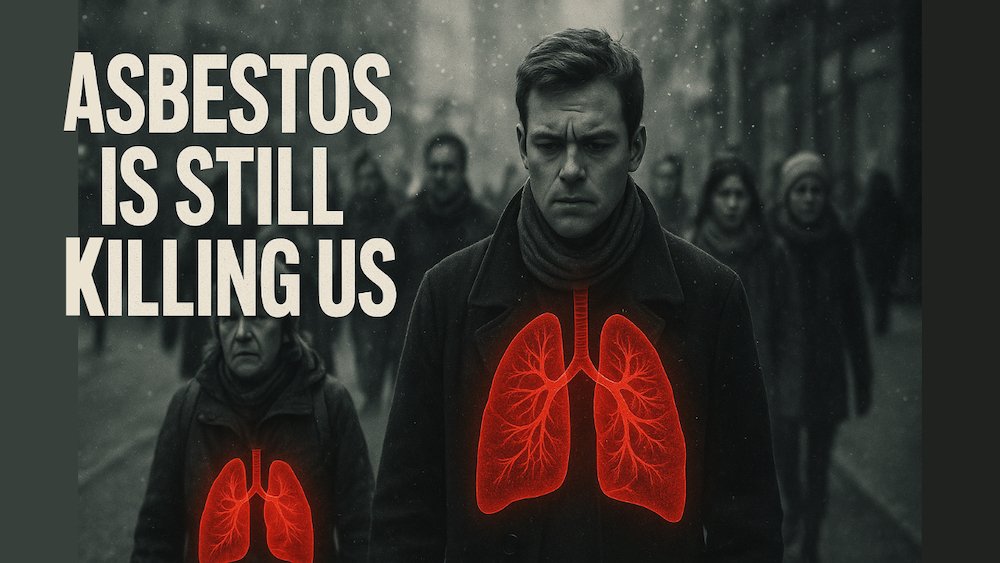Asbestos — once hailed as a miracle material — has become a global public health scandal. Despite decades of scientific evidence linking it to deadly diseases like mesothelioma, lung cancer, and asbestosis, asbestos is still not banned in dozens of countries. In 2025, it remains a legal and active component in industries across the world, including some of the largest global economies.
In this article, we explore the true story behind asbestos: what it is, how it was used, the cover-ups that kept it alive, and why this deadly substance still poses a threat today.
What Is Asbestos?
Asbestos refers to a group of naturally occurring silicate minerals made of fine, fibrous crystals. Its most praised qualities are heat resistance, tensile strength, and insulating properties. These traits made it a staple in construction, manufacturing, shipbuilding, and even household products throughout the 20th century.
A Global Success Story — With a Hidden Cost
By the 1900s, asbestos was everywhere: in cement, floor tiles, roofing materials, insulation, brake pads, and even clothing. Marketing campaigns praised it as a modern solution to fire hazards and structural wear. Governments approved it. Engineers loved it.
But even in the early 20th century, doctors and scientists began to notice something horrifying: workers exposed to asbestos were dying young — often from unexplained lung conditions. By the 1960s, research confirmed that asbestos fibers, when inhaled, caused irreversible damage to the lungs.
The Cover-Up
Companies producing asbestos were aware of the risks. Internal documents uncovered decades later show that many manufacturers, particularly in the U.S. and Europe, knew the health consequences but chose to suppress the data. They feared bans, lawsuits, and loss of profits.
The result? Generations of workers unknowingly poisoned, and billions in health-related costs.
Why Is Asbestos Still Legal?
More than 60 countries — including all members of the European Union, Australia, and Japan — have completely banned asbestos. However, in 2025, it remains legal and in use in:
- United States – While asbestos was partially banned in 1989, that ban was overturned in 1991. It is still legally used in some industries, such as chlorine production and certain automotive components. A full ban was proposed in 2023 but will be phased in slowly.
- China – One of the world’s largest producers and consumers of asbestos.
- Russia – A major global exporter of chrysotile asbestos.
- India – Where asbestos roofing and construction materials are still in wide use.
- Brazil – Although the Supreme Court ruled against asbestos in 2017, enforcement remains inconsistent.
The reason? Powerful industry lobbies, economic dependencies, and lack of political will. In many of these countries, asbestos mining or processing supports thousands of jobs.
The Medical Toll
According to the World Health Organization (WHO), over 90,000 people die each year from asbestos-related illnesses — a number likely underestimated due to poor tracking in developing countries.
Asbestos-related diseases include:
- Mesothelioma – a rare, aggressive cancer linked almost exclusively to asbestos exposure.
- Lung cancer – significantly more common in asbestos-exposed workers, even non-smokers.
- Asbestosis – a chronic, incurable lung disease caused by inhaling asbestos fibers.
Are You Still at Risk?
If you live in or near older buildings (especially those built before 1990), you may be exposed to asbestos without knowing it. Damaged insulation, tiles, or cement can release microscopic fibers into the air.
Even short-term exposure in enclosed spaces has been linked to long-term health risks.
What Needs to Change
Experts agree: there is no safe level of asbestos exposure. Yet regulation varies widely across the globe. Activists, scientists, and victims’ families continue to push for a global ban, better compensation programs, and proper removal efforts in affected buildings.
Until then, awareness is our first line of defense.
Watch the Full Story
This article is based on the documentary video: “Why Asbestos Was Legal… Even After We Knew It Killed“ — published on the Curiosity AI YouTube channel.
🎥 Watch it here: Why Asbestos Was Legal… Even After We Knew It Killed
Subscribe to stay informed about hidden health risks, suppressed science, and the stories mainstream media often forgets to tell.

Pingback: How PFAS Chemicals Are Poisoning the Planet
Pingback: The Diacetyl Scandal: How Butter Flavoring Destroyed Lungs